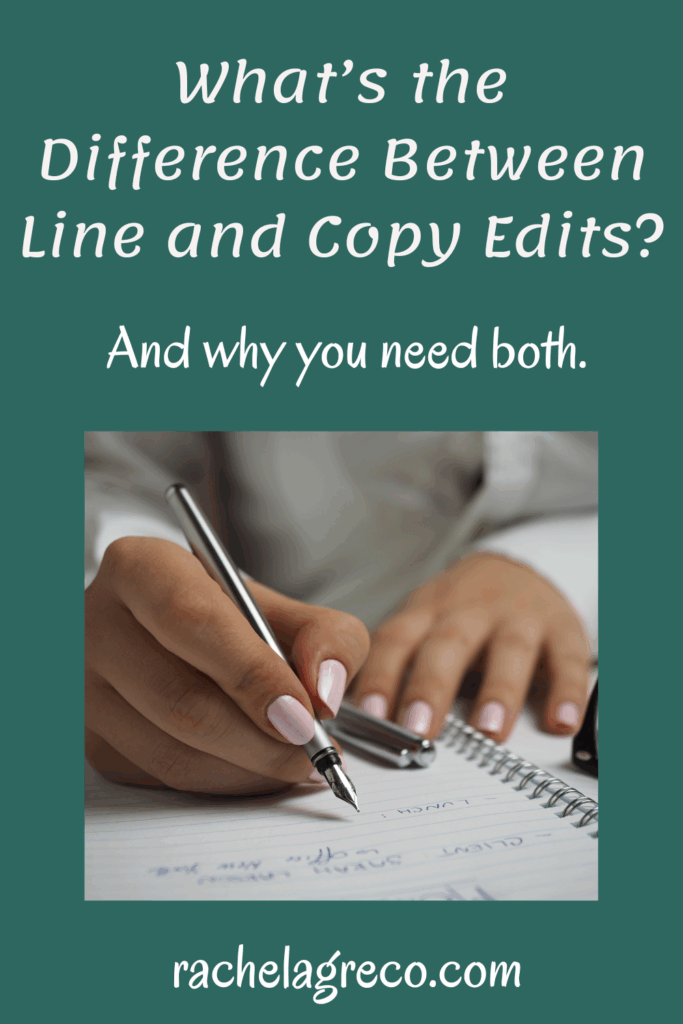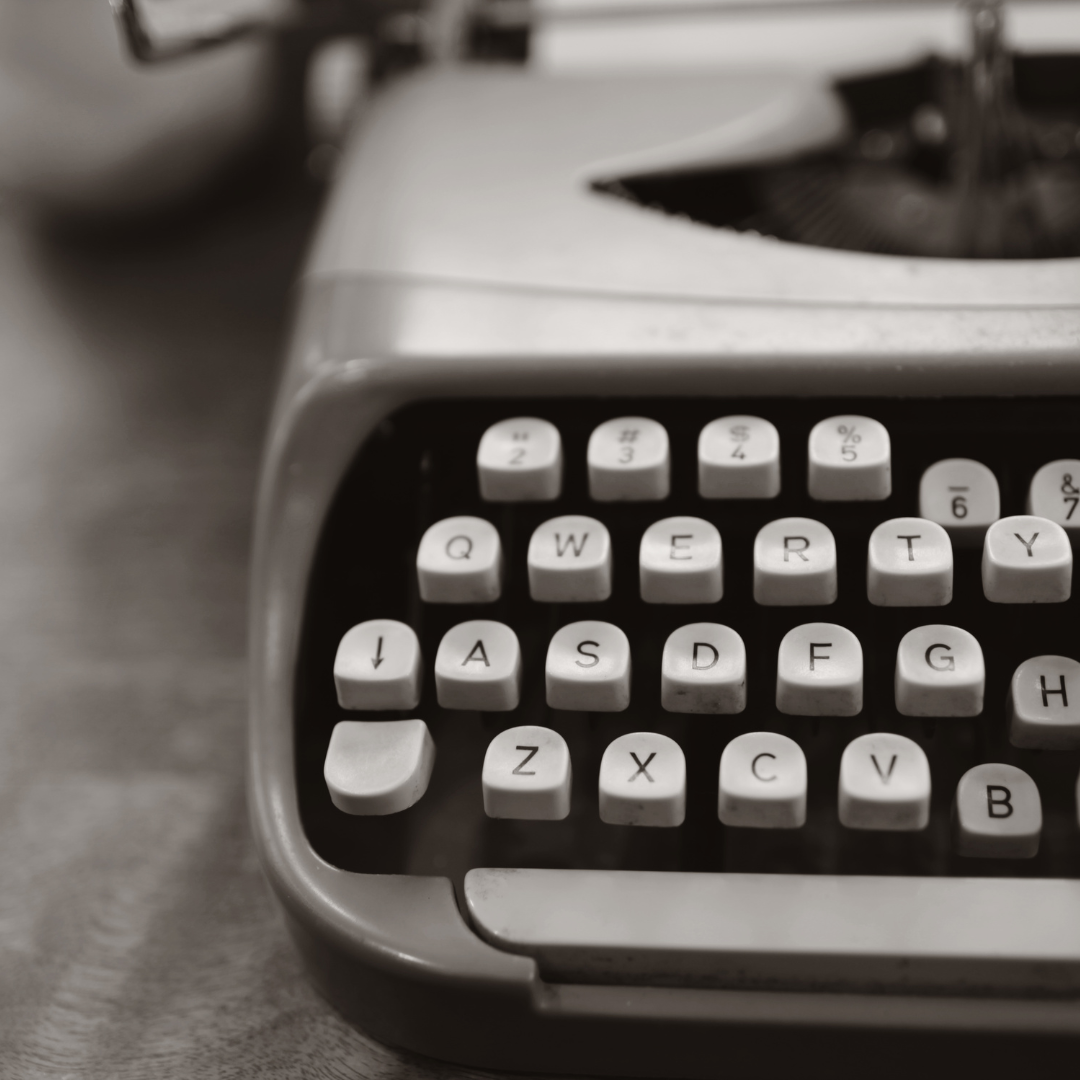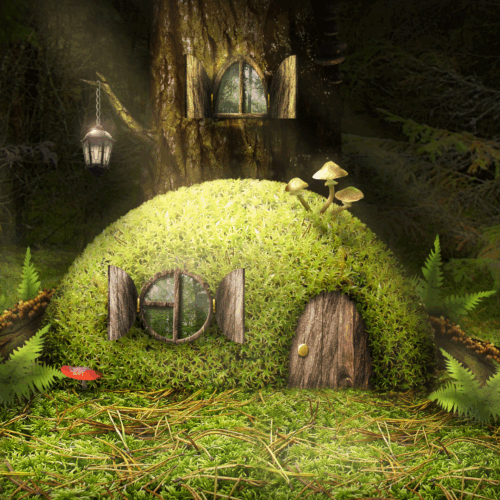
This post was originally published on The Write Conversation.
If you’re a writer hoping to publish a book, you either have heard or will hear the words “line edits” and “copy edits” at some point. But what are they and what’s the difference between them? Can you get one of them or do you need both?
I hope to explain the difference between these two types of edits and make it clear which one is necessary to make your story as professional and polished as possible.
What’s a Line Edit?
Line editing is like the interior decorating of editing: it ensures the story is beautiful and inviting to the reader.
Specifically, a line edit looks at the flow and clarity of your story. The editor will take a look at your scenes and make sure they flow in a logical order and begin and end in the most impactful way possible. They might suggest reworking them or putting them in different places.

A line editor will also look at your sentences. Are they varied? Confusing? A good editor will honestly, yet gently, point out places to cut that confuse the reader or suggest ways to reword clunky sentences.
They’ll also look at each individual word, ensuring it’s the strongest one possible and suggest rewordings of any cliche phrases.
These are just a few examples of what can/should be included in a line edit. For a longer list of what I personally look for in a line edit, check out this post.
The editor will write comments in the margin of your manuscript explaining how to make the scene/sentence/word stronger and examples of how to do so. They might also rewrite a sentence in the text as an example. As the writer, you’re free to ignore any of these changes.
Because there could be several ways to make a phrase more active or how to reword a sentence, a line edit is more subjective than a copy edit.
Overall, a line edit ensures that your story is as clear, concise, and strong as possible.
What to Look For in a Line Editor: You want someone who has read a lot in your genre, who understands what a good story sounds/feels like, and isn’t afraid to point out ways to make your story better, both in the large ways like rewriting a scene, and in the small ways like highlighting a weak word.
What’s a Copy Edit?

If line editing is interior decorating, then copy editing is fixing the plumbing. There are many ways to make a home inviting and beautiful, but usually only one way to fix a toilet! 😁 Copy edits focus on the mechanics of the story, ensuring everything works behind the scenes.
Copy editors look at the grammar, spelling, punctuation, and inconsistencies in your story. Line editors may catch these errors as well, but they’re not actively looking for them.
Because most of these edits are small and quick fixes, the editor will probably just change them in the text using Microsoft Word Track Changes.
What to Look For in a Copy Editor: Someone who has a good eye for details and has The Chicago Manual of Style on their bookshelf. 😄
Pro Tip: Make sure that you get a line edit before you get a copy edit. It will waste your and the copy editor’s time if you get your story grammatically perfect only to have to rewrite sentences and/or scenes!
Key Differences Between Line and Copy Edits
- Subjective vs. Objective
- Artistic vs. Technical
- Flow and Clarity vs. Punctuation and Grammar
- Higher Level vs. Lower Level
- Suggestions vs. Fixing in the Text
Although both line and copy edits ensure that you, the author, give your reader the best experience possible, they go about it in different ways. The main difference between line and copy edits is what they look at: a line edit focuses on the smoothness and clarity of your writing and a copy edit focuses on the grammatical rules of your writing.

Why You need Both a Line and Copy Edit
Because line and copy edits look at different elements in your story, you need both types of edits, and both are equally important. No one wants to read clunky sentences or cliche words. Likewise, who wants to read a story with misspelled words or run-on sentences?
Both types of edits will ensure that your reader remains in the story. Line edits will make sure the reader doesn’t become lost in the weeds of confusing sentences or POV jumps. Copy edits will keep the reader from getting annoyed by misspelled words or missing commas.
Some editors do both a line and copy edit together. Personally, I prefer to get a line edit done, and then, when my manuscript is as polished as possible, I send it either to the same editor or a different one for a copy edit.
Just be sure that you do both at some point in your editing process. Because, after all, writing and publishing stories is all about the reader and giving them the best experience possible!
Need help with your manuscript? As a freelance editor, I offer sample line edits of up to 3,000 words for only $30. Contact me to get started!



